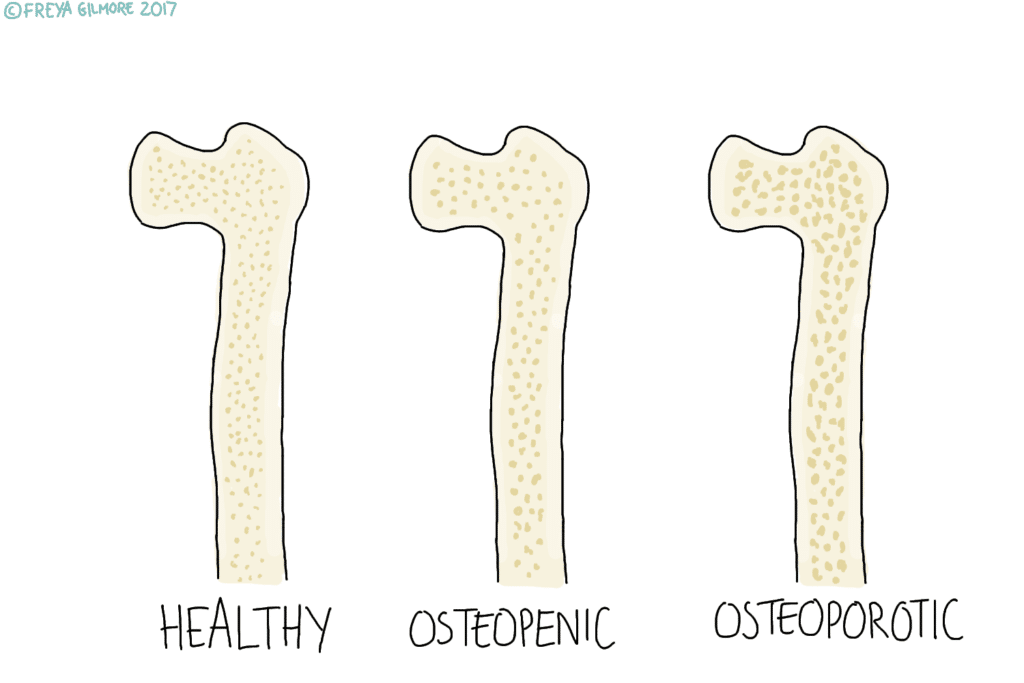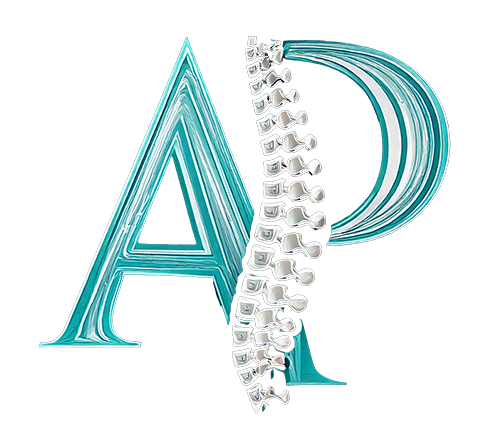Osteoporosis and Osteopenia
Often mistaken for osteoarthritis, osteoporosis is a condition of reduced bone density. Its less severe sibling is osteopenia. Both are diagnosed by special processing of an X-ray image.
What is Osteoporosis?
Measuring bone density gives us a good idea about the strength of bones, and indicates whether there is an increased risk of fracture. Bone density can be measured using an X-ray, which allows a figure to be calculated based on appearance. This is then compared to an average score to determine whether density is adequate or low. Before developing into osteoporosis, bone will become osteopenic. This means that density is reduced, but does not yet cross the threshold.

An X-ray is performed on the lower back (lumbar spine) and hip. This data is used to calculate the bone density.
Risk Factors
Post-menopausal women are in the category most likely to lose bone density. Due to the hormonal changes that lie behind this risk factor, women who have had their ovaries removed are also at higher risk. If a woman goes through the menopause early, whether spontaneously or due to surgery, she may be offered hormone replacement therapy (HRT). This negates the hormonal shift and reduces the risk of a drop in bone density.
Some medications also affect bone density. Longer courses of steroids and anti-oestrogen medications can play a role here. Being underweight or having a history of an undereating disorder are also linked.
Relevance to Osteopathy
Osteoporosis is a systemic condition, and not something that we can directly help with. However, we still need to know if you are affected by it, as its presence means there are some areas that need a more gentle treatment. Sometimes there are no signs of osteoporosis until a bone is fractured, so preventative management and testing are important.
As osteoporotic bones are also more likely to fracture, we need to know if we should be considering this kind of injury. Fractures are out of our remit, and appropriate attention is somewhat urgent.
Sometimes people come to clinic for help in correcting their posture. Although sometimes the cause of a hunched posture is something we can help with, like hip arthritis, it can also be an effect of osteoporosis. When bone density is low, the spine can be affected. At this point, a minor fall or even a cough or sneeze can sometimes be enough to cause a crush fracture. This is where the large parts of the vertebrae (which weight bear) collapse in on themselves. They tend to settle into a wedge shape, which changes the shape of the spine. As we cannot change the shape of the bones, we cannot resolve this. We may, however, be able to provide some relief if there are compensatory muscle and joint pains associated with it.
Management and Prevention of Osteoporosis
The most effective treatment for osteoporosis or osteopenia is to gradually and gently increase weight bearing exercise.
Your doctor may also recommend that you take medication to strengthen the bones. Strong bones need minerals such as calcium, so there may also be dietary changes you can make to help yourself. Not only is it necessary to consume the minerals required, but vitamin D will help you absorb them.
If you need help to get back into exercise for your bones, make an appointment in Leicestershire here.

